Paint perfect watercolour portraits every time: 11 key tips - porterbeires
Paint unblemished watercolour portraits every time: 11 key tips
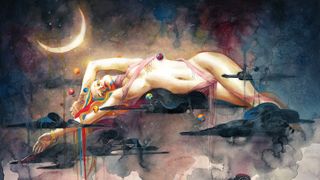
Picture watercolour portraits crapper cost incredibly challenging, just also selfsame satisfying. We've asked the award-winning fine artist Jean Sebastien Rossbach to share his 11 tips for painting better portraits using watercolours. In his tutorial he covers the basics for better watercolour paintings, As well as some of his own unique ways of working.
Ahead you jump in to Blue jean Sebastien Rossbach's training, fig out to speed happening more or less of the essential watercolor techniques you may need to get the most from Jean Sebastien Rossbach's tutorial. Now, in his wrangle, the artist shares his techniques…
Painting watercolour portraits: Introduction
Watercolour is my preferred picture medium. It's easy to function with, and safe because information technology requires neither solvents nor mediums. But as with many things in living, simple can too follow hard, and achieving the artwork goals you have in mind can be challenging if you're not aware of a hardly a techniques and tools, which we'll review in collaboration here.
I oftentimes make the analogy between watercolours and dance, because the colours somehow have their possess biography and run. When working connected a inexperient painting, you enter a game of suggesting and reacting. And this is what I like roughly the medium. You have to stay vulnerable to how watercolours interact with pigments and the paper, and readjust all the clock time. Over time I've found it's become a philosophy of letting go.
Every bit I'll explain in this article, the amount of water you use, the character of wallpaper and the granularity of your pigments are of the essence factors when helping to take your colors where you deprivation them to go.
01. What wallpaper should you use?
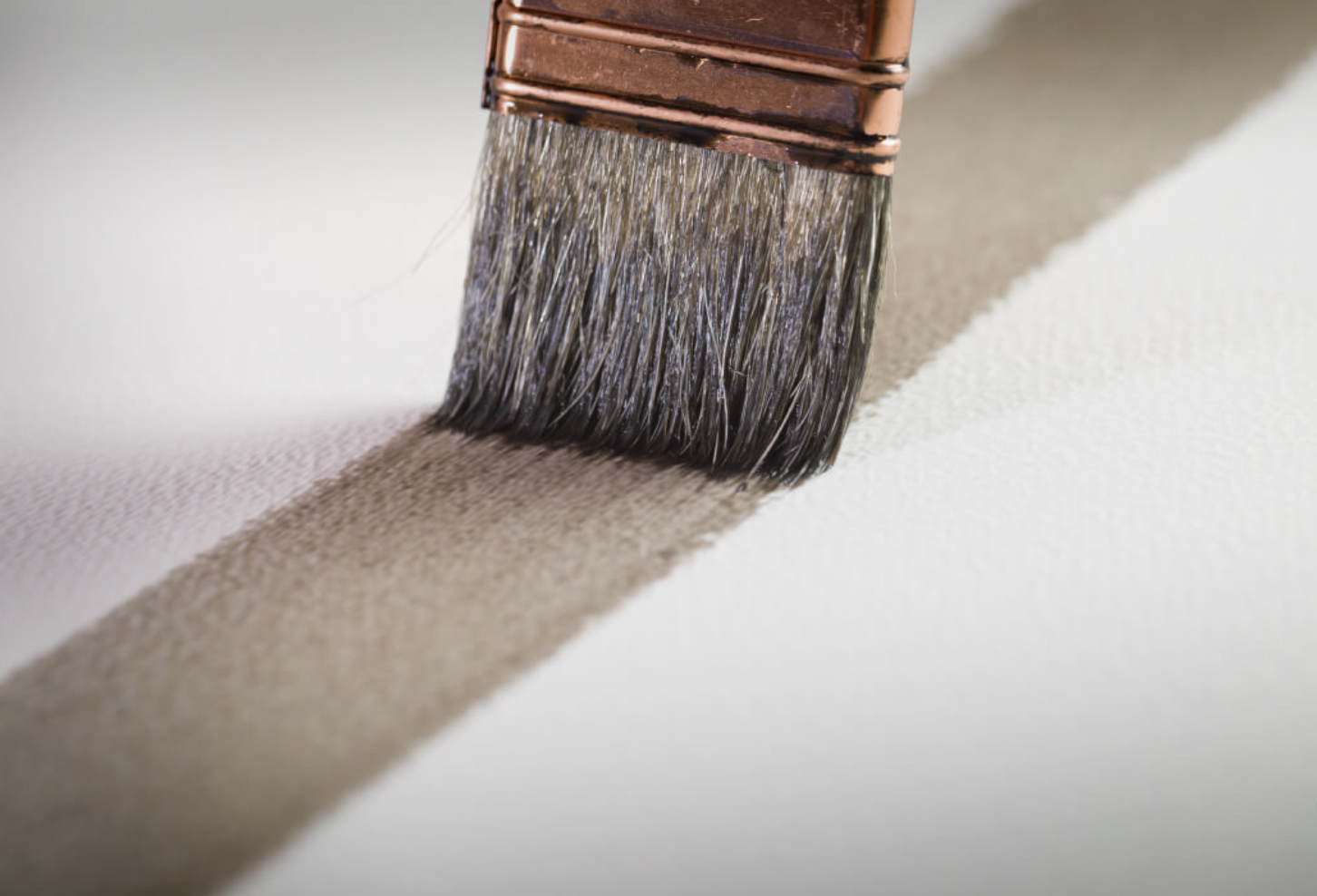
(Image: © © 2022 FILA-ARCHES SAS. All in good order reserved)
The answer depends happening your personality and the result you want to achieve. There are papers with granulate, there are permissive papers, there are smooth papers, papers with tooth, then on. As an illustrator who likes precision and details, I prefer cold press composition with no grain. I seldom settle 300g/M2, and my big paintings (which are over a beat tall) are 600g/m2.
My advice is to begin with the best paper and avoid those designed for students: the quality is poor and you ne'er achieve good results with them. My preference is Arches and Fabriano. Arches accepts no compromises. Select it if you're a hot creative person who likes sharp results. Fabriano is a smoother paper, only you can still be precise. It's as wel more than forgiving, which means you can efface mistakes more easily than with the Arches papers.
02. Consider calligraphy brushes
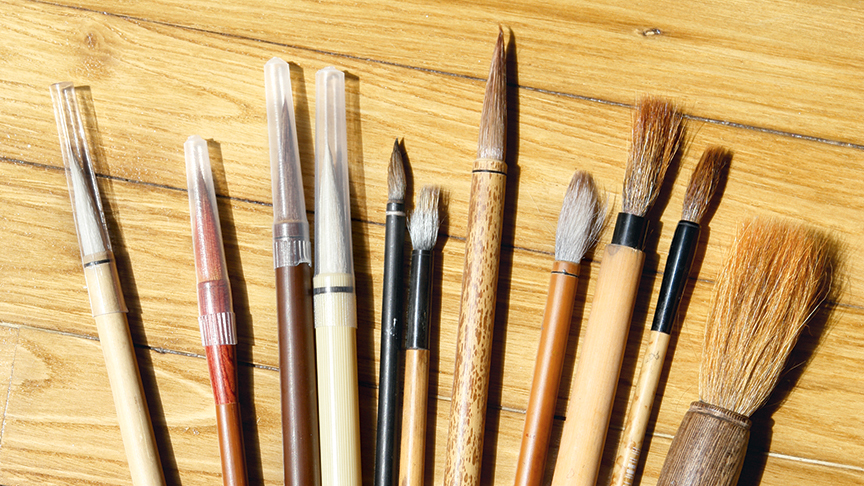
(Image: © Blue jean Sebastien Rossbach)
I'm the first to say that commodity tools make good artists. Yet while you can buy $20 brushes made with luxurious animal hair, I tend to obtain them unnecessary. Afterwards using water-color brushes for a decade, I've started using Asian calligraphy brushes. They're affordable, durable and have a crowing reserve, which means you assume't have to recharge them day in and day out. You can make washes and then switch to detailing in the same movement, without having to transfer brushes. I've launch that they'atomic number 75 also ideal for creating dry effects and gradients. However, I still use spalters when I deficiency to cover mountainous surfaces quick, because I alike to paint happening large format sheets.
03. Work on an inclined plane
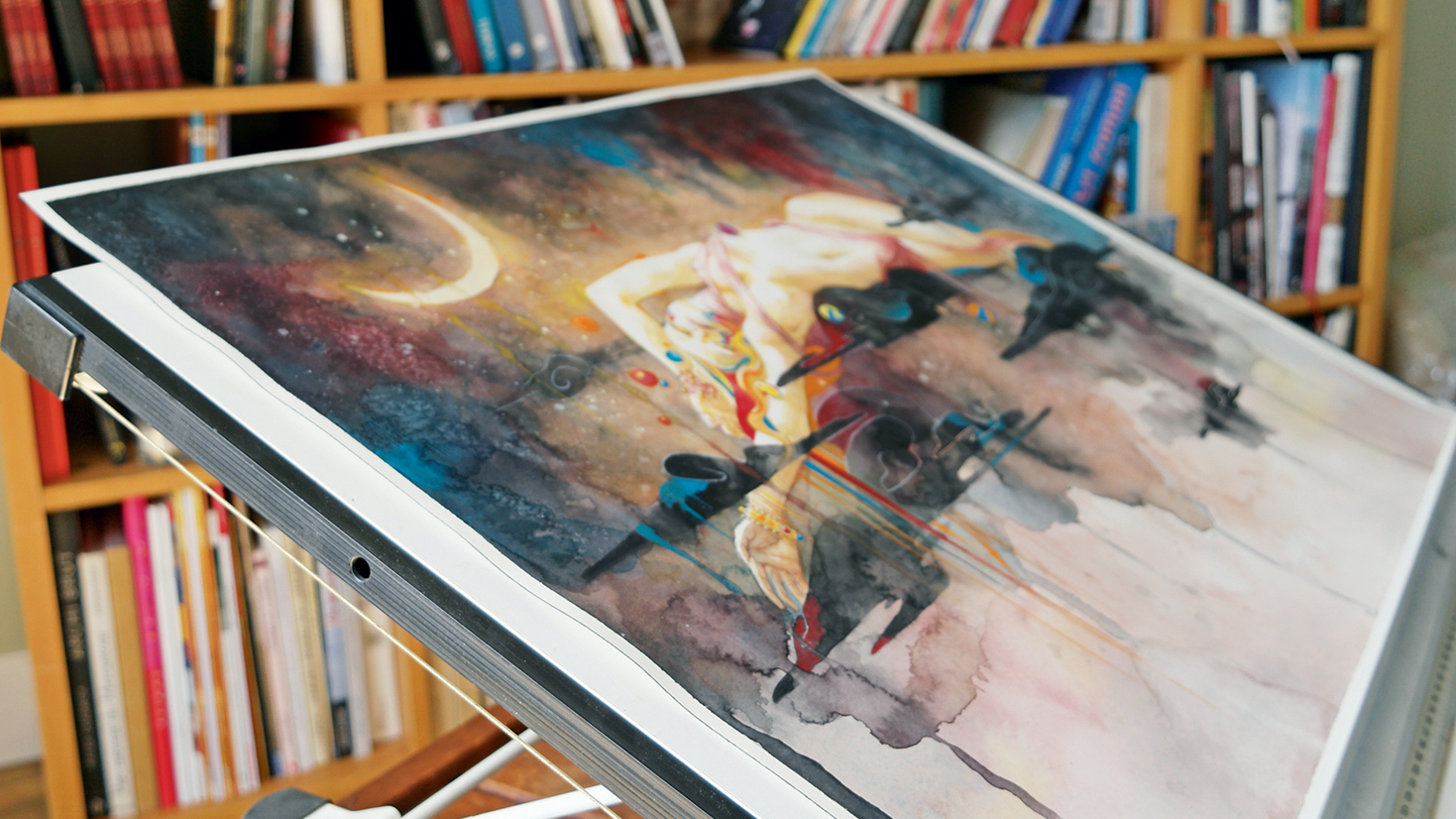
(Double: © Dungaree Sebastien Rossbach)
I paint on a slightly inclined plane. When attending watercolour events I discovered that many professional artists do this, especially those who paint portraits. The reason is that it leads the pigments down the paper, which reinforces the illusion that the sunbathe in the sky is illuminating the portrait. Letting the pigments settle down when applying water-colou makes IT easier to paint volumes and gradients. It results in your portraits looking Sir Thomas More natural because the viewer is exploited to seeing a aspect with the source of the lighting-up coming from above (in new words, sunlight).
04. Staining, granulation and transparency
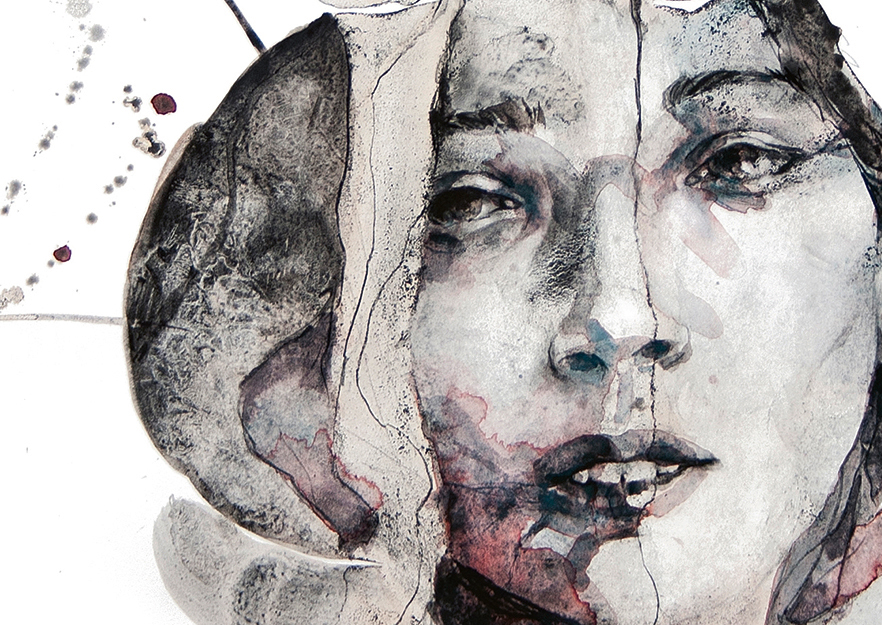
(Image: © Jean Sebastien Rossbach)
Depending on the pigment used, each colour has different properties. For instance, Turquoise blue stains easily, which means it's firm to elate with piddle if you hit a mistake. It's likewise very transparent. Burnt sienna is easier to wash away and it's coarse and more opaque. Granulation is something I look for when painting backgrounds or not-organic elements because IT adds texture and a material facial expression. For painting the skin I prefer a smoother colour that's less prone to staining, such American Samoa Alizarin cerise. This information is usually provided directly on the water-colou tubes, operating room on colour charts acquirable from the brand's internet site.
05. When to habit coloured pencils
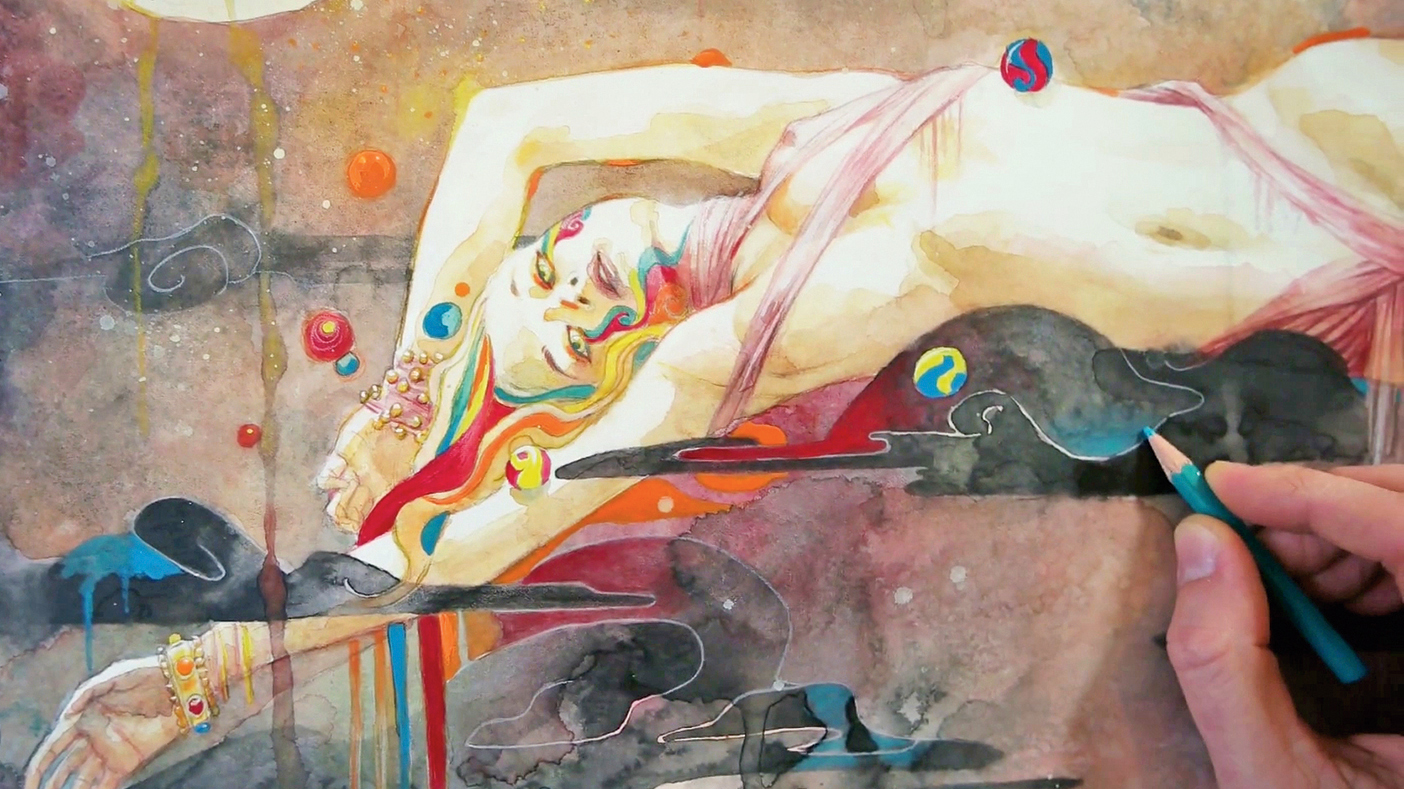
(Paradigm: © Blue jean Sebastien Rossbach)
When making those finishing touches, I use rust-colored pencils. They are abstract for highlighting certain areas or creating precise edges. There are different kinds of pencils. Some are very demanding and precise (Prismacolor), but not rattling echt at reportage, piece others are curdled and silty (Derwent), but more pigmented.
06. Alternating dry and wet layers
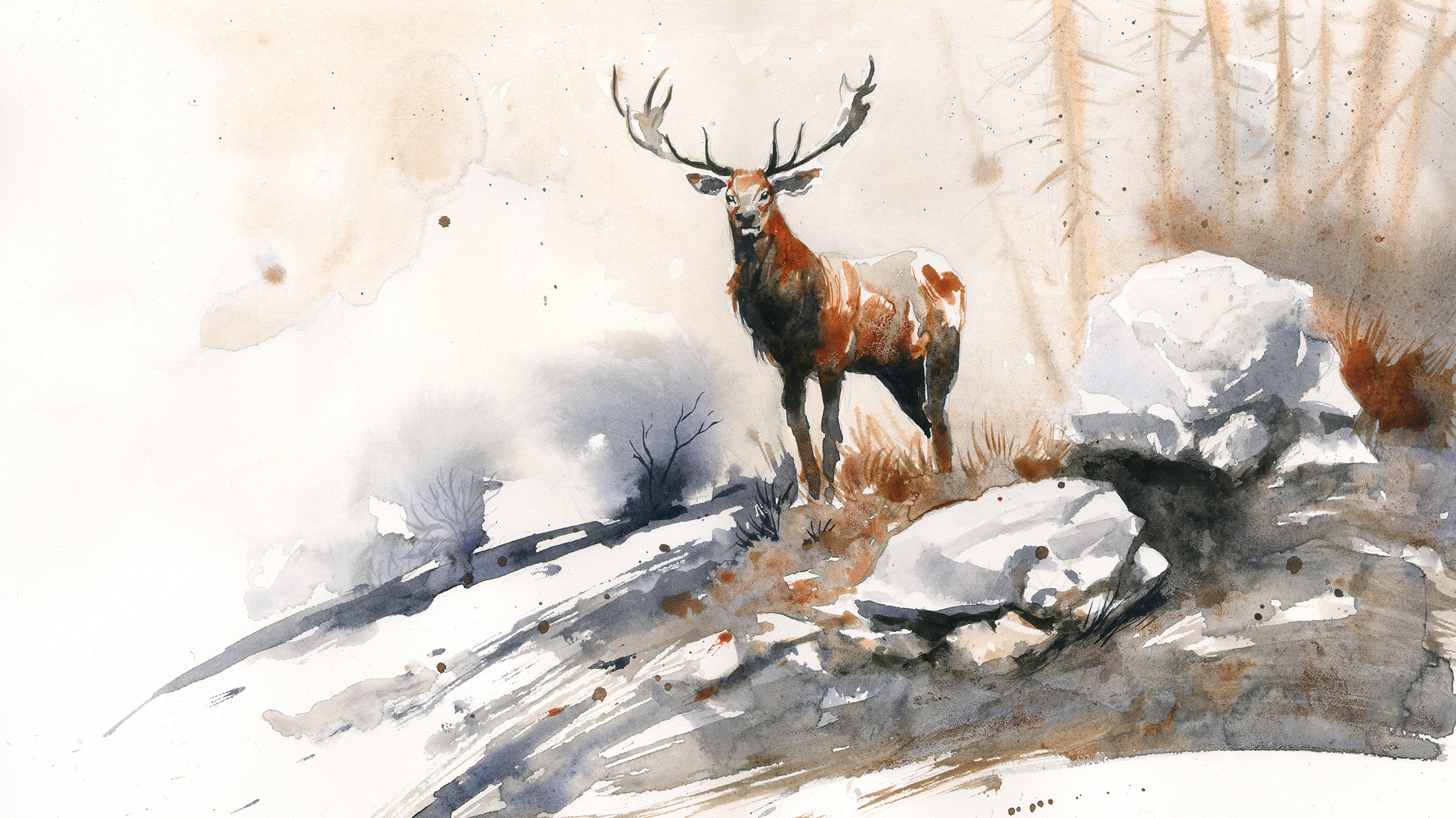
(Image: © Jean Sebastien Rossbach)
The magic of watercolour resides in one's ability to pull through trip the light fantastic between wet and dry areas. Working rheumy along wet means you key on a wet surface. The colors can and then commixture and create abstract shapes that you tooshie barely control. This is my favourite number: the moment when you'Re the co-creator of the painting, the different one being the irrigate itself. Don't be afraid to make bold, positive marks and see what happens. Then react to the actions of the water.
Working along a dry surface is for blocking shapes. I try to connect prohibitionist and wet areas all the time because information technology brings a painting to life. It's not important that the blue of a cloth enters and mixes with the pink of a person's belly. The colours aren't arsenic important as the values.
07. The hole-and-corner to painting volumes
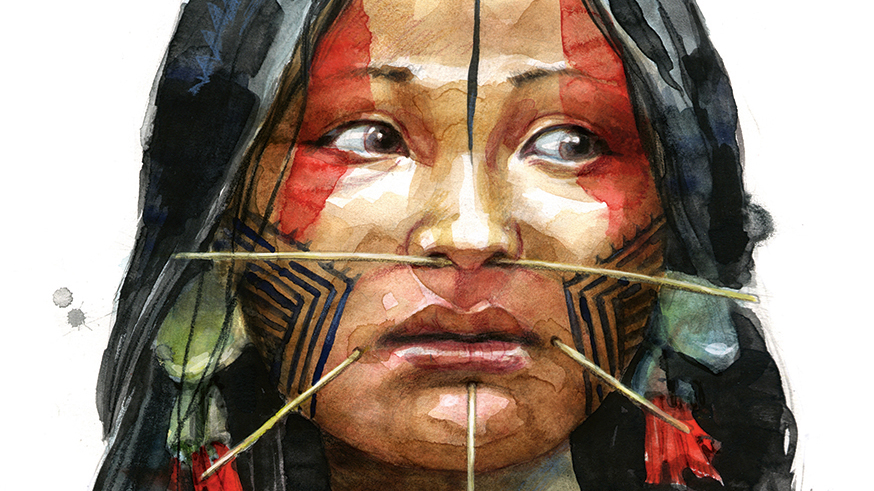
(Look-alike: © Dungaree Sebastien Rossbach)
Picture accurate volumes can spark off up artists, whatever their experience even. One's attention is taken up away the flair and the splashes of overflowing colours, but the volumes are neglected and the finished portrait looks flat. This is chiefly referable the desaturated nature of this medium. If I want to convey the illusion of a realistic portrayal, I pauperism to direction on tones, not colours. Favourable tones leads to good volumes, which results in a good portrait. Unlike oil paint, I'll go from very light washes to strokes that are gradually more loaded with pigment systematic to ramp up up the volumes. It's exactly equal adding Multiply layers on top of for each one others in Photoshop!
08. Painting expressive backgrounds
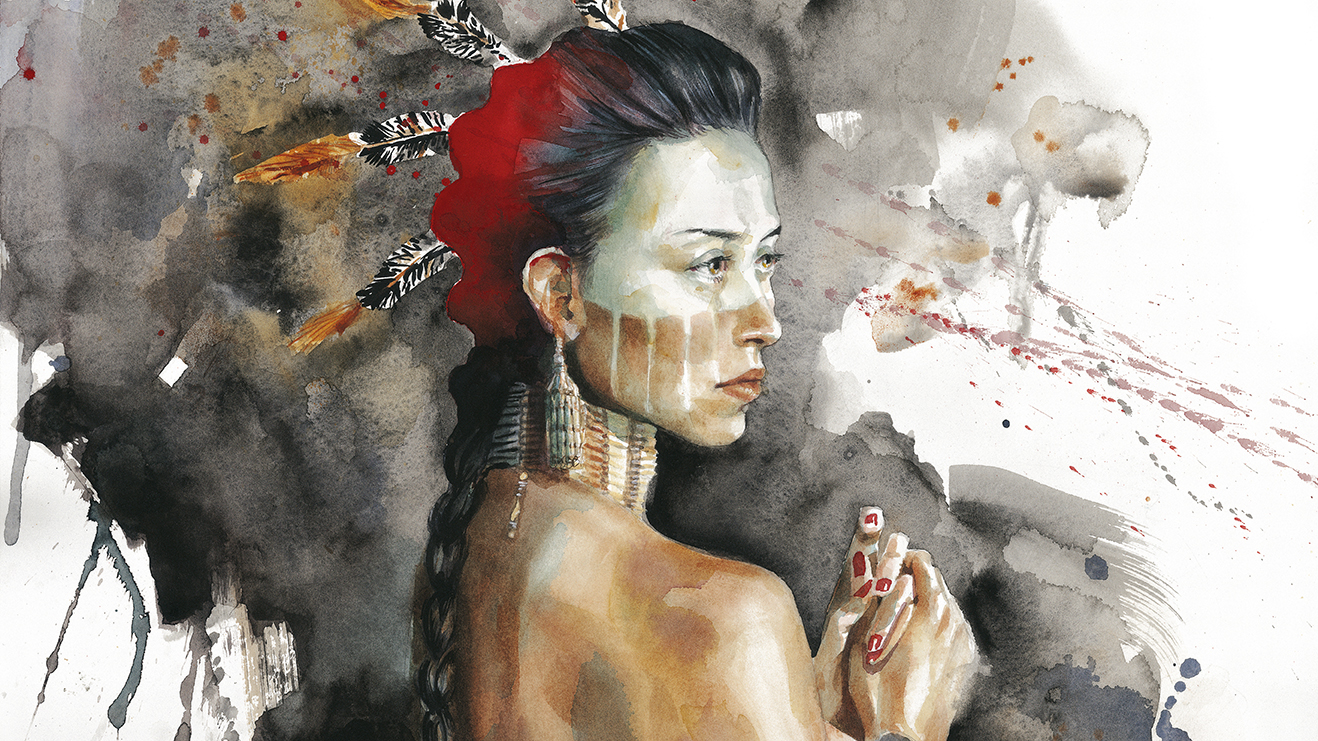
(Image: © Dungaree Sebastien Battle of Rossbach)
When I paint lively portraits, I don't want to overdo the background. Inside information are unnecessary hither and bum even be harmful. The most important element in a portrait are the eyes. This is where I want to concentrate the viewer's attention. So this is where all the details, the smooth gradients and transitions need to go. Then again, what will make my composition stand out is its painterly tactile property – its expressiveness. I'll put all this in the background, like an pinch case that stores the beautiful figure I spent so much time and exploit connected. The background is the resort area where I experiment with water effects. I use salt to create texture, and let the weewe drip and gain stains.
09. Preserving Elwyn Brooks White areas
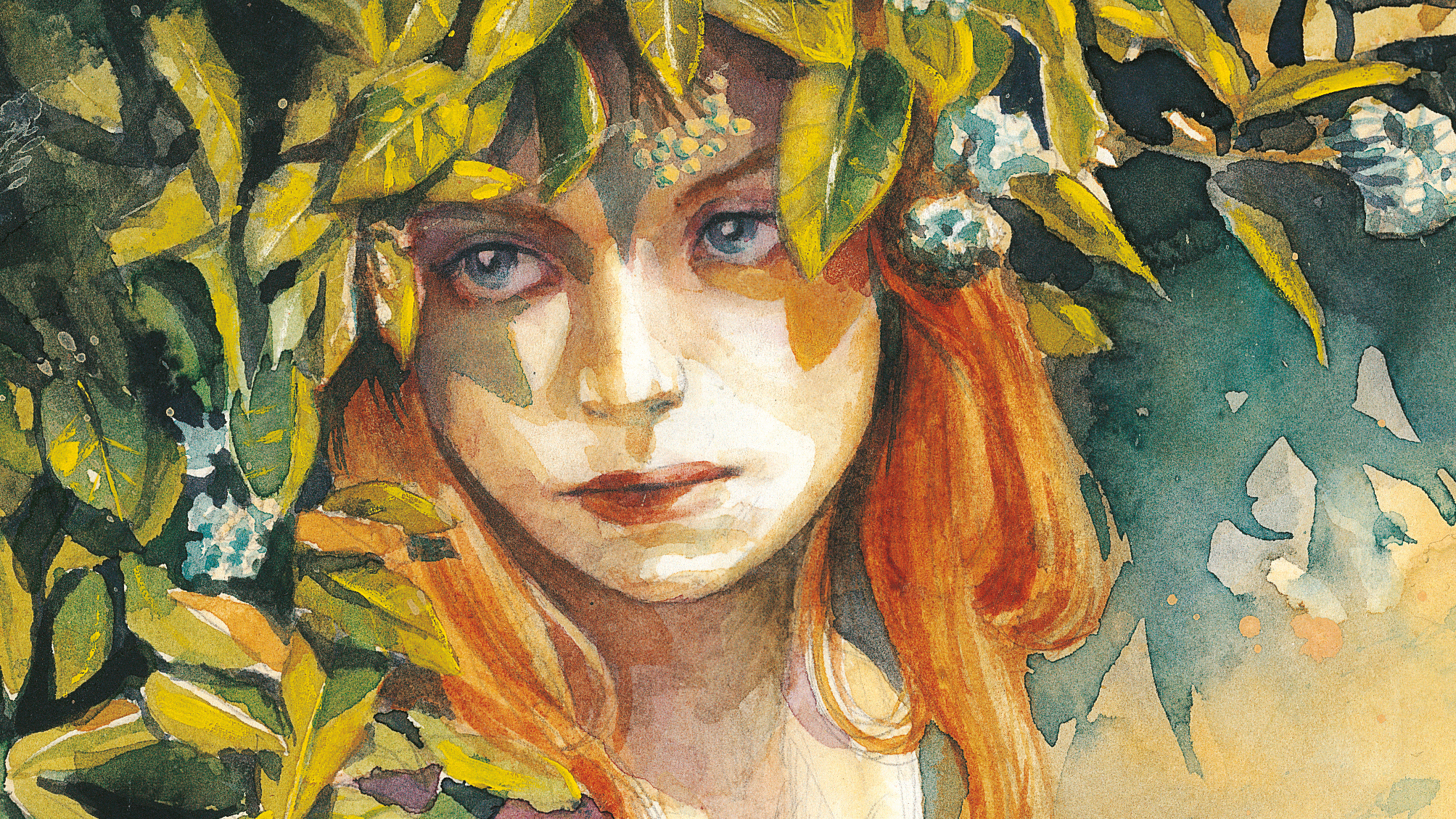
(Image: © Blue jean Sebastien Rossbach)
The natural flannel colour of the paper is the purest white I'll always get. In front applying any paint on the surface I identify wholly snowy areas I need to preserve. I try non to apply whatsoever water there, and use masking fluid if requisite. I try to avoid the use of tweed paint because it always ends aweigh looking greyish and dirty.
10. Using sharp to make textures
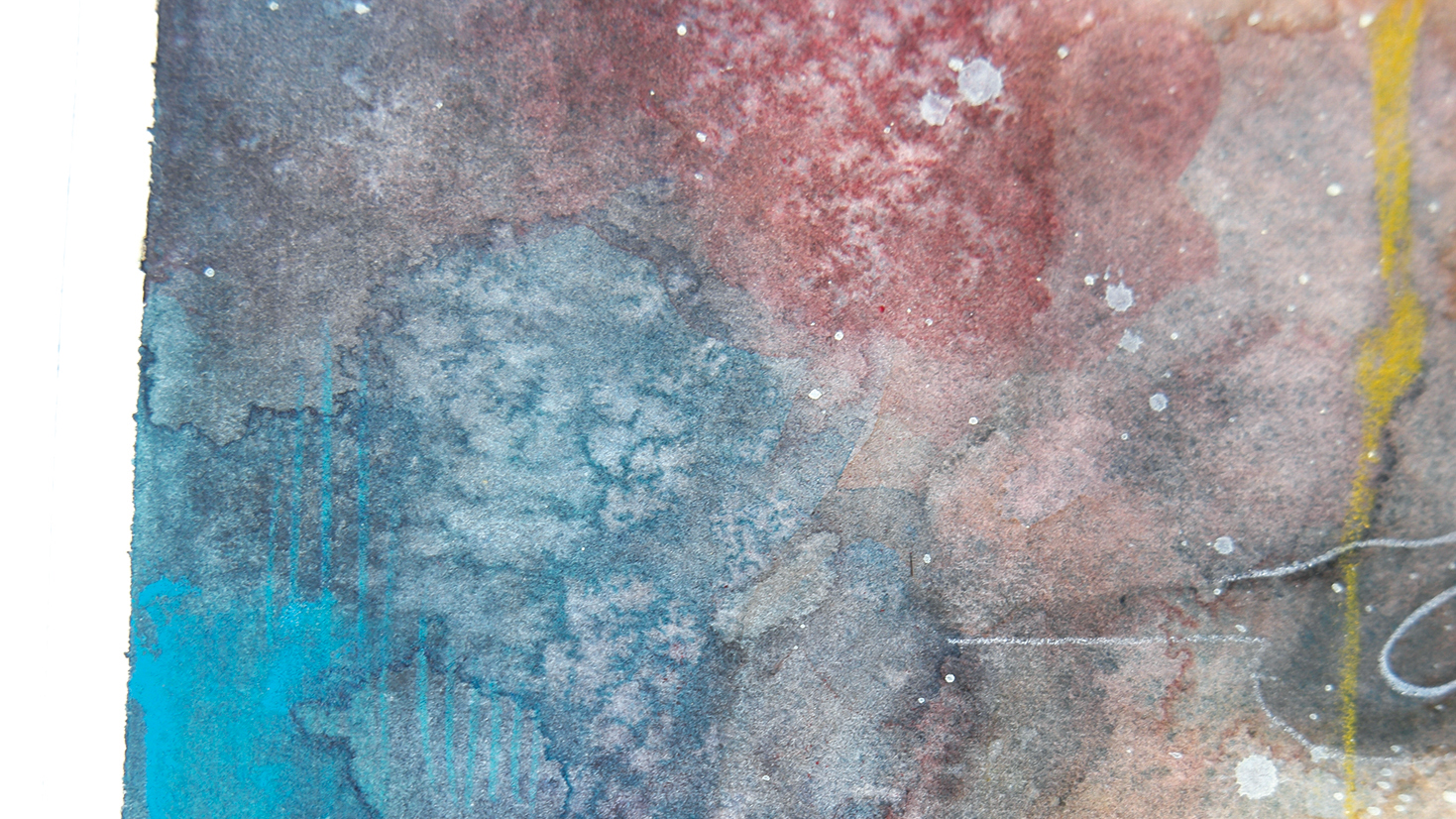
(Image: © Jean Sebastien Rossbach)
I recommend trying this simple and fun watercolour technique: ready a dry wash with lots of water and a fair amount of pigment, then employ it and spread kitchen Strategic Arms Limitation Talks terminated it. Let the theme bone-dry. The results Crataegus oxycantha be a pleasant surprise!
11. Create contrast in your watercolour art

(Image: © Jean Sebastien Rossbach)
To fire up my motivation I commence this portrait of a geisha with the fun part: the background. It's a wash of Payne's grey, Raw umber and touches of Burnt sienna generally applied wet along wet to encourage granulation and staining effects. This is also the arrange when I block in my composition.
I place the darkest colours all around the character's face because I've decided that I'll suppress her face whole white. Watercolour is very often a matter of finding a way to produce contrast, because the medium itself is rather pallid and desaturated. By putting all the darker tones around her white face I'll make information technology leap out from the rest of the composition.
Her chee is the last matter I paint – or should I articulate I actually get into't paint, because I keep the white of the paper desiccated to convey the white make-upbound on her cutis. Even the bottom of the theme is covered with a light grey wash so that the only perfect white is that of the geisha's make-dormie.
Never leave out an issue of ImagineFX
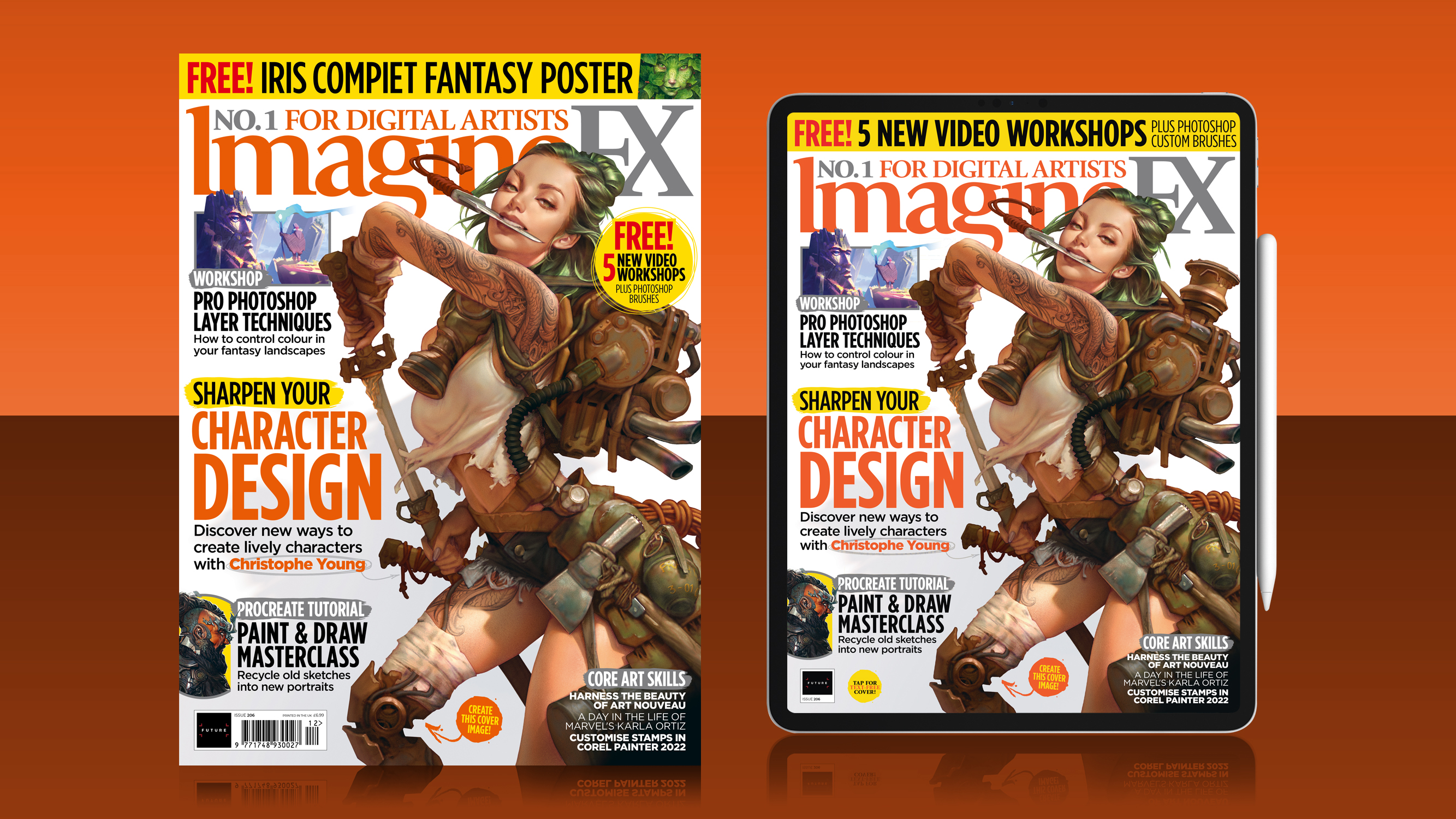
If you likeable this piece, you'll erotic love ImagineFX. The world's darling extremity art mag is on sale in the United Kingdom of Great Britain and Northern Irelan, Europe, United States, Canada, Commonwealth of Australi and Thomas More. Limited numbers of ImagineFX publish editions are forthcoming for delivery to over 120 countries from our online store (the shipping costs are included in all prices).
Read more:
- Discover the best watercolour pencils
- Core skills: Study painting for beginners
- Learn the 7 essential painting techniques for artists
Related articles
Source: https://www.creativebloq.com/illustration/watercolour-portraits-painting-tips
Posted by: porterbeires.blogspot.com


0 Response to "Paint perfect watercolour portraits every time: 11 key tips - porterbeires"
Post a Comment